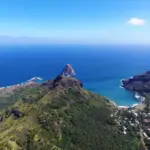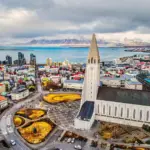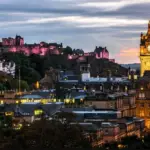
a fascinating and diverse country
Where is the KenyaKenya, a country located in East Africa, is a truly fascinating and diverse nation. With a rich cultural history, stunning landscapes, and lush flora and fauna, Kenya has much to offer its visitors and residents. Its ethnic diversity is reflected in the different traditions, languages, and customs present throughout the country.
From the Maasai tribes inhabiting the vast plains to the coastal peoples influenced by Arab culture, each region of Kenya offers a unique experience. Kenya's natural beauty is also undeniable.
The country is home to some of the world's most incredible national parks and wildlife reserves. The famous Masai Mara National Reserve is home to numerous animal species, including the “Big Five” (lions, elephants, rhinos, leopards and buffalo).
Furthermore, the National park Amboseli offers stunning views of Mount Kilimanjaro in the background while watching herds of elephants roam the plains. Cultural diversity also extends to Kenyan cuisine.
The local cuisine features an interesting blend of traditional African flavors with Arabic and Indian influences. Popular dishes like ugali (a type of porridge made with corn flour), nyama choma (grilled meat), pilau (a spiced rice dish), and chapati (a flatbread) are just some of the delicacies you can savor while exploring Kenya.
overview of the geographical location of Kenya
Kenya is located in the eastern region of Africa, situated between the geographic coordinates 1°N and 4°S, and between 34°E and 42°E. It borders five neighboring countries: Somalia to the east, Ethiopia to the north, South Sudan to the northwest, Uganda to the west and Tanzania to the south. Furthermore, the country is bathed by the Indian Ocean to the southeast.
Kenya's geographical position gives it an impressive diversity of landscapes. From the paradisiacal coastline with its white sand beaches and crystal-clear waters to the majestic mountains that shelter the iconic Mount Kilimanjaro, the country offers a unique variety of natural scenery for nature lovers nature to explore.
Furthermore, Kenya is crossed by the Rift Valley, a spectacular geological fault line that stretches over 6,000 kilometers from Jordan to Mozambique. This region is marked by extinct volcanic formations and is home to incredible lakes such as Lake Turkana – also known as “Jade Sea” – famous for its intense green color and the unique flora and fauna that have developed on its banks.
In short, Kenya's geographic location is a key factor in its natural beauty and cultural diversity. Its strategic position between the Indian Ocean and the African continent contributes to the rich landscapes and ecosystems that make the country so fascinating.
Geographic coordinates and time zones
Kenya is located between 1° and 4° north latitude and 34° and 42° east longitude. This means the country is located in the Eastern Hemisphere, on the African continent. Due to its location near the equator, Kenya enjoys a tropical climate throughout much of the country.
Regarding time zones, Kenya uses East African Standard Time (EAST), which is three hours ahead of Coordinated Universal Time (UTC+3). This time difference puts Kenya in the same time zone as other countries in the region, such as Ethiopia, Tanzania, South Sudan, and Uganda.
Land borders with neighboring countries
Kenya shares land borders with five neighboring countries: Somalia to the east, Ethiopia to the north, South Sudan to the northwest, Uganda to the west, and Tanzania to the south. These borders provide Kenya with a rich cultural diversity and varied influences from these neighboring nations.
The border with Somalia is defined primarily by the Jubba River and the Shebelle River. The border with Ethiopia follows several major rivers, including the Omo River.
To the north, bordering South Sudan, lies a vast expanse of land marked by stunning natural landscapes. The border with Uganda is shared by Lake Victoria, Africa's largest lake, while the border with Tanzania is defined by Mount Kilimanjaro.
Location in relation to the Indian Ocean
Kenya is located on the east coast of the African continent and boasts an extensive coastline along the Indian Ocean. Stretching approximately 536 kilometers, these stunning beaches are known for their white sand and crystal-clear waters. Kenya's major coastal cities include Mombasa and Malindi, which are popular tourist destinations due to their beautiful beaches and rich historical heritage.
The coast is also home to a number of protected marine parks, such as the National park Watamu Marine, where visitors can enjoy spectacular diving and explore colorful coral reefs. Kenya's location on the Indian Ocean also contributes to the country's tropical coastal climate, with warm temperatures year-round and maritime influences on local weather conditions.

Central Plateau
major cities and geographic features (Nairobi, Nakuru, Mount Kenya)
Kenya's Central Highlands is a region of remarkable natural beauty, with varied topography and a collection of vibrant cities. The capital of the country, Nairobi, located in the heart of the plateau, is known for its modernity and busy lifeWith its towering skyscrapers, lush parks, and fascinating museums, Nairobi attracts visitors from all over the world.
Nakuru, another prominent town in the region, is famous for Lake Nakuru and its adjacent National Park. The lake is a birdwatcher's paradise and home to one of the largest flamingo populations in the world.
Furthermore, the Mount Kenya – the second-highest mountain in Africa – is also located in the Central Highlands. With its glistening glaciers and stunning landscapes, it attracts passionate climbers seeking thrilling challenges.
Economic and agricultural importance of the region
The Central Highlands play a crucial role in Kenya's economy. The region boasts fertile soils that are highly suited to diversified agriculture.
Crops such as tea, coffee, and fruit are grown on a large scale on these productive lands. The thriving agricultural industry contributes significantly to the country's exports and generates sustainable employment for many Kenyans.
Furthermore, as the country's economic heart, Nairobi is home to a variety of sectors, from financial services and information technology to manufacturing and tourism. The city is a major commercial and financial hub in East Africa, attracting foreign investment and driving regional economic growth.
Rift Valley
Explanation of the unique geological formation of the Rift Valley
The Rift Valley is a geological wonder that cuts across Kenya from north to south. It's a long, narrow rift in the African plateau that was formed by tectonic forces over millions of years. The valley is made up of a series of depressions, lakes, extinct volcanoes, and fault lines.
This unique formation attracts scientists and geologists from around the world to study its fascinating evolutionary history. Furthermore, the Rift Valley is home to some of Kenya's most spectacular protected areas.
Highlights include Lake Turkana and Hell's Gate National Park
Within the Rift Valley lies the Lake Turkana – also known as the "Sea of Deserts." It is one of the largest permanent lakes in the desert and boasts majestic landscapes with steep cliffs surrounding its shores.
The lake is home to a rich biodiversity with unique marine species and has become a popular location for scientific expeditions. Another notable attraction in the Rift Valley is the National park Hell's Gate – a place of incomparable beauty and cinematic scenery.
With its impressive rock formations, deep gorges and bubbling thermal pools, the park offers visitors an experience unique hiking and cycling trails. Visitors can also enjoy activities such as rock climbing and wildlife watching.

Kenya Coast
Highlights include Mombasa, Malindi and Lamu
The Kenyan coast is a picturesque, sunny stretch along the Indian Ocean, attracting tourists with its white-sand beaches and crystal-clear waters. The main coastal cities include Mombasa, Malindi and Lamu. Mombasa It is an important seaport that has a rich history as a meeting point for different cultures over the centuries.
With its historic forts, ancient mosques, and lively markets, Mombasa offers visitors an authentic cultural experience. Malindi is known for its stunning beaches and pristine coral reefs.
Marine life lovers can explore the tropical waters on exciting dives or simply relax on the paradisiacal beaches. Lamu – a UNESCO-preserved medieval town – captivates travelers with its distinctive Swahili architecture and tranquil atmosphere.
The island is also famous for the annual Lamu Cultural Festival, which celebrates local culture and traditions. In short, Kenya is a country of remarkable geographical richness, spanning from the Central Highlands with its vibrant cities and economic importance, to the incredible Rift Valley with its unique geology and natural attractions such as Lake Turkana and the National park Hell's Gate.
The Kenyan Coast offers a tropical retreat with stunning beaches and a rich cultural heritage. Each region contributes to the country's diversity and invites visitors to explore its wonders. natural and cultural unique.
Lucas Wanderlust has a tireless spirit of adventure, always seeking new travel experiences. Fascinated by the world and the possibility of exploring unknown destinations, he fell in love with the sense of freedom and self-discovery that traveling alone provides. With a backpack on his back and a heart open to the unknown, Lucas embarks on exciting journeys, where each destination becomes a unique chapter in his life story. He gives himself body and soul to the magic of solo travel, inspiring others to follow in his footsteps and discover themselves through adventure.







